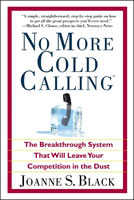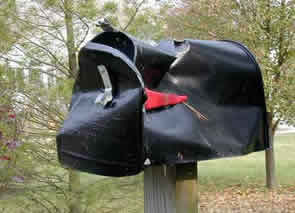 I recently read a book that made me rethink how I market myself to others and wanted to share it with you: “No More Cold Calling” by Joanne Black. The essence of the book is that the odds of selling something to people you don’t know (“cold leads”) (either by email, phone, ads, or US Mail) is extremely small and therefore expensive. Ms. Black recommends spending time working on your referral networks.
I recently read a book that made me rethink how I market myself to others and wanted to share it with you: “No More Cold Calling” by Joanne Black. The essence of the book is that the odds of selling something to people you don’t know (“cold leads”) (either by email, phone, ads, or US Mail) is extremely small and therefore expensive. Ms. Black recommends spending time working on your referral networks.
Identify your ideal customer. Ask people you know if they can give you a referral to one or two people that meets your ideal. You don’t just want the names of the people – you want them to contact your referral and have them tell about you themselves. If you’re thinking, “This seems like I’m asking a favor for my business” – you’re right. It’s a favor you’re asking because people really want to help and be helped. Another approach is to join one of a number of referral-based organizations.
By spending time pro-actively building your referral network it’ll result in a higher “close rate” and better clients as well. You can still do your “cold lead” development to keep your branding going, but referrals, she claims, is where it’s at.
Here’s who I’m looking for: a business owner who is ready to change their day-to-day business practice to leap in front of their competition.
Who are you looking for?


 The first time you meet someone, what’s one of the first things that they ask (“What do you do for a living”)? Underneath the question they are really asking: Can you help me? Can I help you? Can we help each other? Are you someone I should look up to?
The first time you meet someone, what’s one of the first things that they ask (“What do you do for a living”)? Underneath the question they are really asking: Can you help me? Can I help you? Can we help each other? Are you someone I should look up to? Here are my rules for corresponding with clients (these rules work for either email or postal letters). If I choose to read a letter (from a company) I’ve made a decision how to spend my time. If I find that the letter wasn’t valuable, then I’ll gradually learn to ignore (or worse, distrust) other letters from that company. Once someone ignores (or distrusts) you it’s very hard to regain their trust. Think before you write!
Here are my rules for corresponding with clients (these rules work for either email or postal letters). If I choose to read a letter (from a company) I’ve made a decision how to spend my time. If I find that the letter wasn’t valuable, then I’ll gradually learn to ignore (or worse, distrust) other letters from that company. Once someone ignores (or distrusts) you it’s very hard to regain their trust. Think before you write!